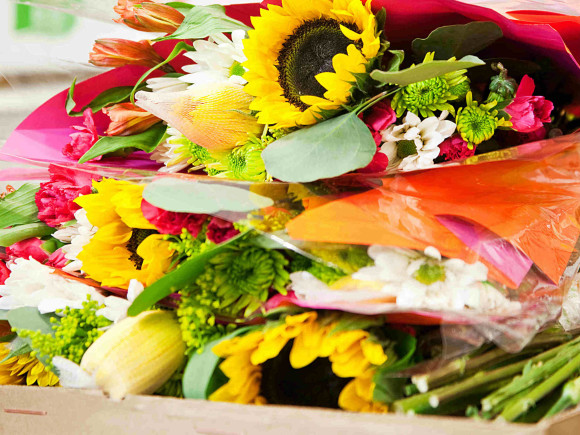LATAM Cargo transported more than 160 million bouquets of flowers (around 9,000 tons) in the three weeks leading up to Valentine’s Day, representing 21% of the total Latin American flower market over this period.
Between January 16 and February 7, over 140 cargo flights departed from Ecuador and Colombia, tripling the average of weekly air cargo shipments. Between Bogotá, Colombia and Miami – where LATAM transports 360 tons on average per week this figure reached 900 tons per week this Valentine’s Day season. Likewise, between Quito, Ecuador and Miami, shipments increased from 450 to 1,500 tons per week. In total, LATAM Cargo transported over 4,200 tons of flowers from Colombia and more than 4,700 tons from Ecuador.
LATAM Cargo has had a successful season, delivering the flights necessary to meet the demand of all our customers, as well as providing the necessary resources in our origin and destination warehouses, which are fundamental in this demanding time of the year”, said Felipe Caballero, Commercial Manager of North and Central America, LATAM Cargo.
During this period, the cargo aircraft depart from Bogotá and Medellin in Colombia as well as Quito, Ecuador, with the United States and Netherlands being the principal destinations. The majority of shipments land in Miami, one of the most important distribution hubs in the world and a center for LATAM Airlines Group’s cargo operations.
This season, LATAM Cargo transported approximately 7,500 tons to Miami International Airport, which representing over 80% of the flowers transported by the group. 90% of the flowers remain in the state of Florida and the remaining 10% are transported to other parts of the US such as Los Angeles.
In a typical week, Miami airport receives about 5,000 tons of flowers from Ecuador and Colombia, but in the weeks leading up to Valentine’s Day, this weekly traffic almost triple, surpassing 14,000 tons.
LATAM Cargo flew all the flowers for this Valentine’s Day in dedicated cargo aircraft, which have the capacity to ship between 3,100 and 5,200 boxes, equivalent to more than two million flowers per shipment. In total, LATAM Cargo delivered more than 160 million bouquets this season, which is enough to give at least one flower to every woman in the United States.
Experts in the transport of perishable goods
In 2016, LATAM Cargo launched a new product portfolio, which includes PERISHABLE, a service designed for the transport of perishable goods like flowers.
PERISHABLE offers a comprehensive logistics chain for perishable goods, with temperature controlled warehouses throughout the LATAM Cargo network, temperature programming in the holds of cargo and wide-body passenger aircraft as well as more efficient reception and delivery times for cargo.
One of the fundamental aspects for transporting flowers and other types of perishable goods is the cold chain. Our PERISHABLE product is based on a temperature control throughout the logistics chain to maintain and ensure the quality of the product. LATAM Cargo has a fleet of aircraft and specially equipped facilities for this purpose including in Miami, where we have the largest cold storage facility in our cargo operation”, said Cristián Ureta, CEO LATAM Cargo.
Colombia and Ecuador, leading flower exporters worldwide
While other Latin American countries like Peru, Costa Rica and Guatemala have significant flower production, Colombia and Ecuador are the largest producers, exporting over 42,000 tons of fresh flowers to over 90 countries during the Valentine’s Day season alone.
For both countries, floriculture is an important part of their economies. The main varieties shipped are red roses, carnations, pompoms and chrysanthemums. In 2016, LATAM Cargo transported over 100 thousand tons of flowers from these two countries with a market share of approximately 26%.
For LATAM Cargo, the flower market represents a significant part of our cargo operations in Colombia and Ecuador, accounting for about 57% of the cargo we transport annually from Latin America to North America and Europe, through weekly operations from Medellin, Bogotá and Quito”, added Caballero.
The flower market is active throughout the year, but the Valentine’s Day (January and February) and Mother’s Day seasons (April and May) represent the periods of highest demand.
